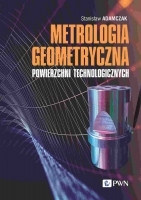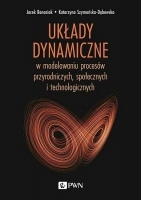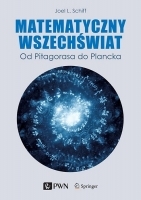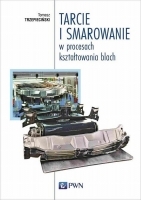Influence of size on the compressive properties of cellular structures manufactured by additive technologies
Wpływ rozmiaru na właściwości ściskające struktur komórkowych wytwarzanych technologiami przyrostowymi *
Mechanik nr 04/2024 - Druk 3D
ABSTRACT: This article is a continuation of research on hexagonal cell structures. Previous research has dealt with cell structures in normalized models, where it was shown that cell structures should be studied from a single cell to a suitably generated iterative model based on recursive formulas. The aim of this paper was to compare manufactured cell structures with an appropriately defined formula. Printed models of the hexagonal structure subjected to compression showed that, in the case of the Polylactic Acid Blue material, as the size of the side length of the hexagonal cells increased, the quality of the generated diagrams also increased, which informed the undesired effects of the compressive force in the tests. In the case of cells manufactured from the PA2200 material, it was noted that the maximum force acting on the cell structure decreased with increasing cell side length, however, no undesirable situations occurred during testing in contrast to structures manufactured from Polylactic Acid base materials. In the case of Polylactic Acid materials, special attention had to be paid to the Polylactic Acid Gray material. The models were printed with the same parameters, from the same Stereolitography language file, had a slightly higher mass and were subjected to the same compression test, yet showed significant differences in the tests carried out compared to the other models.
KEYWORDS: PLA, PA2200, FFF, SLS, cell structures, additive manufacturing
STRESZCZENIE: Artykuł jest kontynuacją badań dotyczących struktur komórkowych heksagonalnych. Poprzednie badania dotyczyły struktur komórkowych w modelach znormalizowanych. Wykazano, że struktury komórkowe należy badać od pojedynczej komórki do odpowiednio wygenerowanego modelu iteracyjnego opartego na wzorach rekurencyjnych. Celem pracy było porównanie wytworzonych struktur komórkowych o odpowiednio zdefiniowanym wzorze. Wydrukowane modele struktury heksagonalnej poddanej ściskaniu wykazały, że w przypadku materiału Polylactic Acid Blue wraz ze wzrostem długości boku komórek heksagonalnych wzrastała także jakość generowanych diagramów, co informowało o niepożądanych efektach działania siły ściskającej. W przypadku struktur komórkowych wykonanych z materiału PA2200 zauważono, że maksymalna siła działająca na strukturę komórkową zmniejszała się wraz ze wzrostem długości boku struktury komórkowej, jednakże podczas badań nie wystąpiły żadne niepożądane sytuacje w porównaniu ze strukturami wytwarzanymi z materiałów na bazie kwasu polimlekowego. W przypadku materiałów z polikwasu mlekowego szczególną uwagę należało zwrócić na materiał z szarego kwasu polimlekowego. Modele zostały wydrukowane z tymi samymi parametrami, z tego samego pliku, który został zapisany w języku stereolitograficznym, a jednak miały nieco większą masę i zostały poddane temu samemu testowi ściskania, a mimo to wykazały istotne różnice w przeprowadzonych testach w porównaniu z pozostałymi modelami.
SŁOWA KLUCZOWE: PLA, PA2200, FFF, SLS, struktury komórkowe, wytwarzanie przyrostowe
BIBLIOGRAFIA / BIBLIOGRAPHY:
[1] Oleksy M., Budzik G., Bolanowski M., Paszkiewicz A. “Industry 4.0. Part II. Conditions in the area of production technology and architecture of IT system in processing of polymer materials”. Polimery. 64 (2019): 348–352, https://doi.org/10.14314/polimery.2019.5.5.
[2] Kozior T., Mamun A., Trabelsi M., Sabantina L. “Comparative Analysis of Polymer Composites Produced by FFF and PJM 3D Printing and Electrospinning Technologies for Possible Filter Applications”. Coatings. 12 (2022): 48, https://doi.org/10.3390/coatings12010048.
[3] Cao D., Bouzolin D., Lu H., Griffith D.T. “Bending and shear improvements in 3D-printed core sandwich composites through modification of resin uptake in the skin/core interphase region”. Composites. Part B: Engineering. 264 (2023): 110912, https://doi.org/10.1016/j.compositesb.2023.110912.
[4] Qi J., Chen Z., Jiang P., et al. “Recent Progress in Active Mechanical Metamaterials and Construction Principles”. Advanced Science. 9 (2022): 2102662, https://doi.org/10.1002/advs.202102662.
[5] Vodilka A., Koroľ M., Kočiško M., Zajac J. “Adjusting Surface Models of Cellular Structures for Making Physical Models Using FDM Technology”. Polymers. 15 (2023): 1198, https://doi.org/10.3390/polym15051198.
[6] Ghazlan A., Nguyen T., Ngo T., et al. “Performance of a 3D printed cellular structure inspired by bone”. Thin-Walled Structures. 151 (2020): 106713, https://doi.org/10.1016/j.tws.2020.106713.
[7] Cao D. “Strengthening the interphase of thermoplastic sandwich composites by interleaving carbon nanotube yarns”. Materials Today Communications. 36 (2023):106655, https://doi.org/10.1016/j.mtcomm.2023.106655.
[8] Bochnia J., Blasiak M., Kozior T. “A comparative study of the mechanical properties of fdm 3D prints made of PLA and carbon fiber-reinforced PLA for thin-walled applications”. Materials. 14, 22 (2021), https://doi.org/10.3390/ma14227062.
[9] Cao D. “Enhanced buckling strength of the thin-walled continuous carbon fiber–reinforced thermoplastic composite through dual coaxial nozzles material extrusion process”. The International Journal of Advanced Manufacturing Technology. 128 (2023): 1305–1315, https://doi.org/10.1007/s00170-023-12014-8.
[10] Kadhum A.H., Al-Zubaidi S., Abdulkareem S.S. “Effect of the Infill Patterns on the Mechanical and Surface Characteristics of 3D Printing of PLA, PLA+ and PETG Materials”. ChemEngineering. 7 (2023): 46, https://doi.org/10.3390/chemengineering7030046.
[11] Kozior T., Kundera C. “Rheological properties of cellular structures manufactured by additive PJM technology”. Tehnicki Vjesnik. 28, 1 (2021): 82–87, https://doi.org/10.17559/TV-20191007145545.
[12] Szot W. “Rheological Analysis of 3D Printed Elements of Acrylonitrile Butadiene and Styrene Material Using Multiparameter Ideal Body Models”. 3D Printing and Additive Manufacturing. (2023), https://doi.org/10.1089/3dp.2022.0298.
[13] Bochnia J., Blasiak S. “Stress relaxation and creep of a polymer-aluminum composite produced through selective laser sintering”. Polymers. 12, 4 (2020), https://doi.org/10.3390/POLYM12040830.
[14] Zhang X., Yu X., Chen J., et al. “Influence Mechanism of the Trabecular and Chamfer Radii on the Three-point Bending Properties of Trabecular Beetle Elytron Plates”. Journal of Bionic Engineering. 18 (2021): 409–418, https://doi.org/10.1007/s42235-021-0025-z.
[15] Gaur A., Chawla K., Kiran R., Patel S. “Effective thermo-electro-mechanical properties of Menger sponge-likefractal structures: a finite element study”. Physica Scripta. 98 (2023): 095104, https://doi.org/10.1088/1402-4896/ace5f1.
[16]Płatek P., Rajkowski K., Cieplak K., et al. “DeformationProcess of 3D Printed Structures Made from FlexibleMaterial with Different Values of Relative Density”.Polymers. 12 (2020): 2120, https://doi.org/10.3390/polym12092120.
[17]Mazurkiewicz M., Kluczyński J., Jasik K., et al. “BendingStrength of Polyamide-Based Composites Obtained during the Fused Filament Fabrication (FFF) Process”.Materials. 15 (2022): 5079, https://doi.org/10.3390/ma15145079.
[18] Ullah A.S., D’Addona D.M., Seto Y., et al. “Utilizing Fractals for Modeling and 3D Printing of Porous Structures”. Fractal and Fractional. 5 (2021): 40, https://doi.org/10.3390/fractalfract5020040.
[19] Haftendorn D. “Fraktale, Chaos, Ordnung”. In: “Mathematik sehen und verstehen. Spektrum”. Heidelberg: Akademischer Verlag, (2010): 79–116.
[20] “Technical Data Sheet PLA”, (2018), https://www.google.pl/url?sa = t&rct = j&q = &esrc = s&source = web&cd = &cad= rja&uact = 8&ved = 2ahUKEwiKvPS0i4iAAxXgVaQEHbW4DM8QFnoECCYQAQ&url = https%3A%2F%2Fwww.matterhackers.com%2Fr%2F9EBLeA&usg = AOvVaw3AQLWiVDQN6E0md5-VEix7&opi = 89978449 (dostęp: luty2024).
[21] EOS. “Technical Data Sheet PA2200”, (2023), https://www.materialdatacenter.com/mb/material/pdf/30963/30963/PA2200Performance1.0 (dostęp: luty 2024).
[22] “Makerbot”. In: “MakerBot Sketch – user manual”, (2022), https://cadxpert.pl/drukarki-3d/makerbot-sketch/ (dostęp: luty 2024).
[23] Stoia D., Linul E., Marsavina L. “Influence of Manufacturing Parameters on Mechanical Properties of Porous Materials by Selective Laser Sintering”. Materials. 12 (2019): 871, https://doi.org/10.3390/ma12060871.
DOI: https://doi.org/10.17814/mechanik.2024.4.6
* Artykuł recenzowany




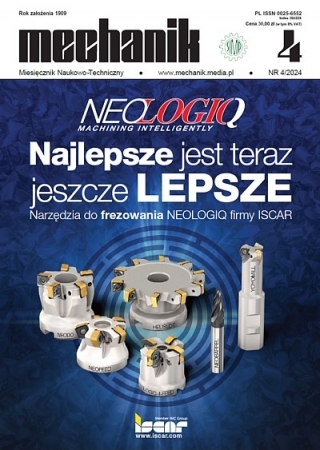
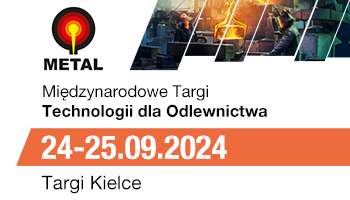



.gif)
